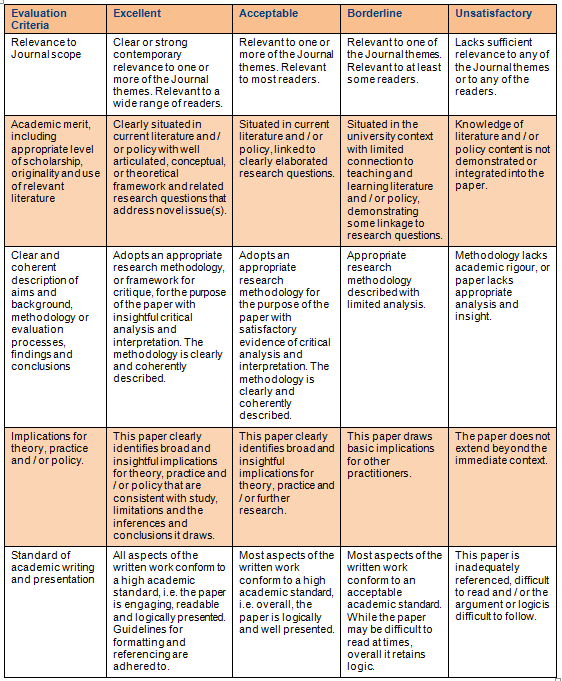Submissions
Submission Preparation Checklist
As part of the submission process, authors are required to check off their submission's compliance with all of the following items, and submissions may be returned to authors that do not adhere to these guidelines.- All authors have a profile with author email, institutional affiliation, ORCID, biographical details
- The submission is original work which has not been previously published, nor is it before another journal for consideration.
- The submission file is in a recent version of Microsoft Word.
- Author(s) have included a title page with full contact details of the corresponding author and full titles, names, affiliations, ORCID ID and email addresses of co authors. Please upload this as a supplementary file.
- No information revealing the identities of the author(s) have been included in the manuscript itself. Check that you have deleted author and affiliation details from your file's properties (access File>Properties in the MS Word menu to delete) and click OK.
- The text adheres to the stylistic and bibliographic requirements outlined in the Author Guidelines. Acronyms and abbreviations are avoided. References are up to date.
- The authors have cross checked the in-text references with the Reference List. Citations and references are in APA 7th style.
- A 250 word (maximum) abstract and up to six (6) key words have been included.
- Ethics approval has been granted (where appropriate) and information regarding ethics approval is included in the paper.
- The author/s have read the Copyright Notice and have permission for any reproduction.
- Three potential reviewers for the paper, including names, affiliations, email addresses and any conflict of interest, have been provided on the cover page which is separate from the manuscript.
- All URL addresses have been checked and are activated.
- The article's content has not been created using generative AI (artificial intelligence), except for language assistance purposes.
JOURNAL PAPERS
The Editors welcomes original research or evidence-based practice papers that have not been published elsewhere and are not being considered for another journal. Thre types of submission are available:
1. Journal Papers up to 8,000 words which are within the scope of the Journal are invited for review. All material submitted for publication shall be evaluated by a double blind peer review process.
2. Rural Connections: Celebrating Schools and Communities up to 600-2000 words. This is a reviewed but not refereed section highlighting positive initiatives in rural, regional and remote contexts.
3. Book Reviews up to 800 words addressing issues related to rural, regional and remote contexts.
The Editors, in consultation with the Editorial Committee, reserve the right to accept or reject any manuscript. Inquiries should be made to the Journal Manager sandi.fielder@murdoch.edu.au.
Copyright Notice
Authors contributing to The Australian and Internation Journal of Rural Education agree to publish their articles under a Creative Commons CC-BY 4.0 license, allowing third parties to copy and redistribute the material in any medium or format, and to remix, transform, and build upon the material, for any purpose, even commercially, under the condition that appropriate credit is given, that a link to the license is provided, and that you indicate if changes were made. You may do so reasonably, but not in any way that suggests the licensor endorses you or your use.
Authors retain copyright of their work, with first publication rights granted to The Australian and International Journal of Rural Education.
It is the author's responsibility to ensure that any submitted and published article conforms to standard professional practices regarding the citing of already published work. That is, all cited material is properly attributed and referenced appropriately. With regard to third-party copyright material, such as images, on acceptance of articles the author will be required to sign a document confirming they have obtained the necessary permission or clearance in writing to reproduce that third-party material in their articles.
Privacy Statement
The names and email addresses entered in this journal site will be used exclusively for the stated purposes of this journal and will not be made available for any other purpose or to any other party.
